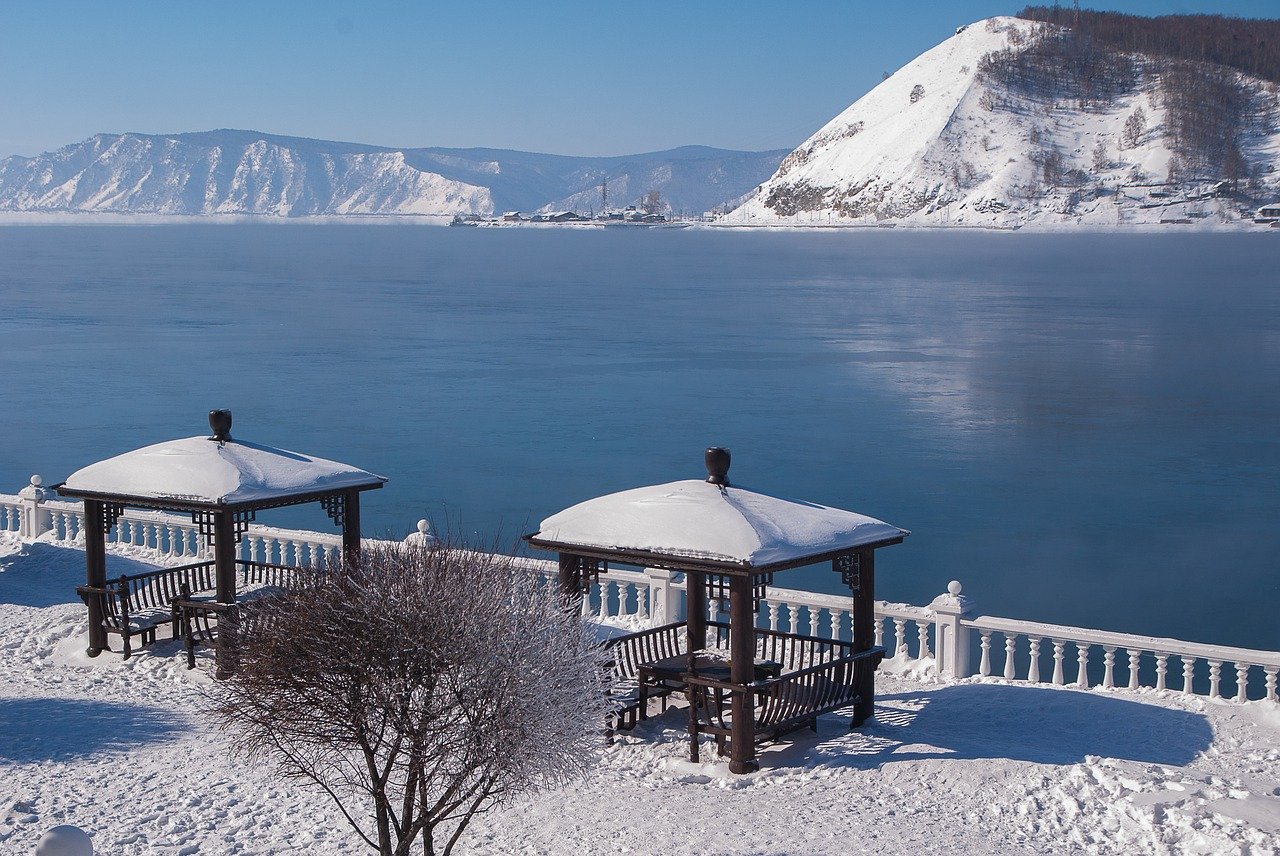
Lake Baikal Weather and Climate
Climate and Seasons at Baikal
Eastern Siberia is located in a temperate, strongly continental climate zone.
However, the huge bodies of water contained in Lake Baikal have a special effect on the coastal climate and, due to this, unusual microclimate conditions are formed, with warm winters and cold summers. The water bodies of the lake act as a huge natural stabilizer which make it warmer in winter and colder in summer than, for example, in Irkutsk, located at a distance of only 70 km from the lake. In summer, the air temperature can reach + 35 ° С. In winter, Baikal waters are covered by incredibly clear and smooth ice. The temperature above the lake surface in the middle of the winter is about -21°C, and 5-10°C higher on the shores, on average -10 ° С – 17 °С. Due to low evaporation from the lake, very rarely clouds form here, so the area of Lake Baikal is notable for high total duration of sunshine. Overcast and cloudy days are rare here.
Lake Baikal’s water is very clear because it contains very few mineral salts.
From the surface it is possible to see objects 130 feet (40 meters) below.
This clarity is maintained by large numbers of planktonic animals eating floating debris. In spite of its great depth the water in the lake is well mixed, and oxygen is plentiful even in the bottom waters.
Baikal’s Temperature Regime of Water
Due to its low mineralization, the lake water is remarkable for its amazing purity, transparency (visible at a depth of 40 meters) and oxygen saturation. In spring, the water is particularly transparent with an intense blue color. In summer, due to the increase of organic matter, the transparency decreases, changing its color to a blue-green shade. The average annual water surface temperature is about + 4 ° С. In summer the water reaches +16 to + 17 ° С, and on the surface it can reach + 22 to + 23 ° С.
From January to May, Lake Baikal is almost entirely covered by a layer of ice of about 1-2 meters, except for a small area of 15-20 km at the source of Angara.
One of the amazing mysteries of Lake Baikal is the appearance, during the winter, of huge dark rings on the ice, visible from above. Most likely, they are formed as a result of the release of methane from the depths of the lake. This phenomenon contributes to the formation of huge proparins with a diameter of hundreds of meters and a very thin layer of ice.
Winds on Baikal
Winds are a distinctive feature of the Baikal climate, they almost always blow and the maximum wind speed can reach 40 m / s. There are more than 30 names for winds blowing on the lake, like the northwest wind, the northeast wind, the south east, southwest wind, or wire – wind blowing in the center of Baikal. The winds blow mainly along the coast, and there are virtually no areas on the coast protected from these sharp and strong winds.